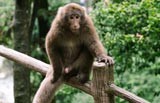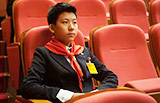Counterfeit fossils undermine research projects
By Cheng Yingqi (China Daily) Updated: 2012-09-06 07:31Fake fossils are duping scientists and museums, a senior paleontologist has warned, after a scholar was forced to retract a controversial essay that stated the cheetah originated in China.
According to Li Chun, associate researcher at the Institute of Vertebrate Paleontology and Paleoanthropology under the Chinese Academy of Sciences, counterfeits are now widespread and have become a serious risk to genuine study projects.
"I believe many scholars are victims of fake fossils," he said, before estimating that more than 80 percent of marine reptile specimens on display in Chinese museums "have been altered or artificially combined to varying degrees".
"Without professional training in paleontology, it's impossible for researchers to recognize fakes from the real thing."
Li's alert follows the debunking last month of an essay co-authored by Huang Ji, a Chinese scientist, and Danish researcher Per Christiansen in 2008 about an alleged new species of cheetah.
The key piece of evidence was a fossilized skull unearthed in Gansu province that dated back 2.5 million years.
"Primitive Late Pliocene Cheetah, and Evolution of the Cheetah Lineage," which appeared in 2009 in "The Proceedings of the National Academy of Sciences of the United States," an international journal, stated the "new species" was the oldest cheetah ever found, which overturned people's belief that the animal originated in North America.
On Aug 21, the journal published a retraction.
"In recent years, I carried out serial research over the controversy problems in my essay, and I found it did have flaws," said Huang, a specimen maker at Shanghai Science and Technology Museum, which has a strong interest in the origin of big cats.
"I decided I should face up to the problem, so I asked for the essay to be withdrawn," he said.
The essay had been controversial for the beginning, with several scientists questioning the validity of the skull.
However, Li said: "I don't think Huang used the fake fossil intentionally. His professional field is modern animals, which is quite different from paleontology."
Deng Tao, a vertebrate paleontologist at the Institute of Vertebrate Paleontology and Paleoanthropology, said he knew the skull was a fake on "first sight".
"A lateral view of the skull clearly shows the cheekbone is unnaturally high and robust, and has clear boundaries where the fake bone was artificially pieced together.
"The back is obviously not original. The surface is so abnormal."
Specializing in late Cenozoic mammals of the Linxia Basin, where the skull was said to have been unearthed, Deng had seen different kinds of fake fossils.
"Probably to make it appear more complete, thus enhancing its commercial value, Chinese fossil dealers make numerous fake fossils. I had seen hundreds of 'complete' fossils actually glued by bone fragments, some fragments belonging to different animals," he said.
Li recalled the first time he saw a fake fossil, which was when he was still in high school.
"I knew nothing about paleontology but was highly interested in modern animals," he said. "I saw a clumsily forged fossil in a store in Beijing - just some colored carvings on an ordinary stone - but I thought I had found the fossil of a very important species, so I was very excited."
chengyingqi@chinadaily.com.cn
- Smog incentives hard to introduce
- China refutes British latest six-monthly report on Hong Kong
- Prayers said for earthquake victims
- China on blue alert for strong cold front
- HK chief executive condemns riot, supports police to restore order
- Hong Kong overnight riot injures at least 48 police officers
- Special troops to help keep China-Pakistan corridor safe
- New policies to aid Belt and Road business ventures
- Zika curbs to include mosquito mass extermination
- Xi visits old revolutionary base areas ahead of Spring Festival







